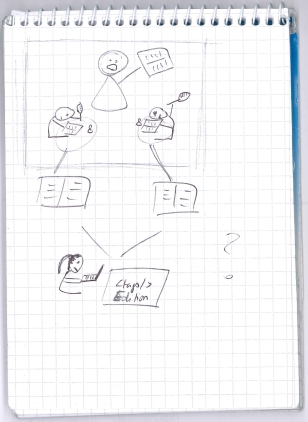
The challenge: Find one aspect of your thesis that people other than your examiners would be interested in and put it on an A0 poster using less than 300 words.
Never having designed a poster before I was grateful to get some valuable tips from experienced poster designers answering very basic questions such as:
- Which font sizes are readable at a distance of 2 meters?
- What is the suggested word count (min and max!)?
- Where do I get free images?
Once I got these things sorted out I could turn to the more difficult question: What to put on the poster?
The first task was by far the most comfortable: get a cup of tea, sit on the couch and think. My aim was to try come up with one-sentence-answers to a few simple questions:
- What is my thesis about?
- Why is my research important?
- Which aspect of my thesis is most likely to interest non-experts?
- Which aspect can be linked to an image?
- What is the main message that people should take away from my poster?
I assumed that people are interested in something they can relate to. And one reaction I almost always get when I talk about my thesis is: “Wait, they had to write down an entire dictionary? Those poor students!” So I decided a poster about the school situation and the process of dictation is more likely to draw attention than a description of how rich and fascinating the dictionary’s microstructure is.
Having come up with the poster’s main message the next task was to develop an outline of the general layout that would transport that message. My leading questions were:
- What is the narrative of my poster?
- Which aspects have to be visible in the images? (e.g. a teacher talking, at least two students writing, screenshots of the manuscripts, and an image of me working on the digital edition)
Only then did I put these thoughts on paper (see resulting sketch above). To work out the layout details I went online to get inspiration from other people’s posters. I thought about which ones I liked best (why?) and which ones I didn’t like (why?) and let these reflections guide me.
The most exciting task was to turn my sketch into a presentable poster. Not being an expert on graphic design I decided to stick to simple tools and features. My aim was to allow a non-expert audience to quickly identify the important information, so I used as little text as possible, chose self explanatory images, and already summarised the main facts in the headings. The fun facts, copyright information and smaller details I included for those who would then stop to take a closer look. All these reflections led to the final result below.
Working on this poster was not only a lot of fun, it was also a great exercise in how to communicate my research.


Looking forward to see the poster “in the flesh” (or rather paper) tomorrow at the Research Expo at St Edmund Hall – nice to have the Hall colour as background!
LikeLike